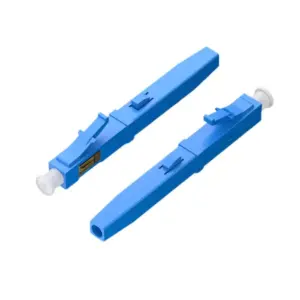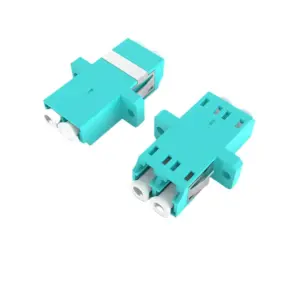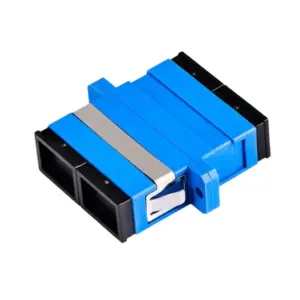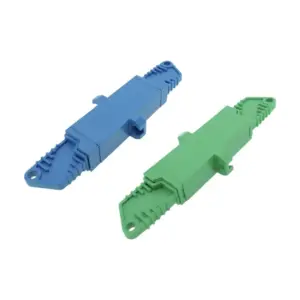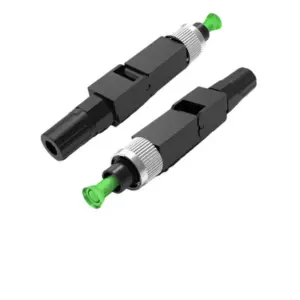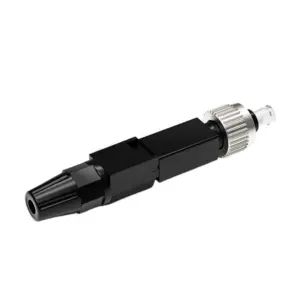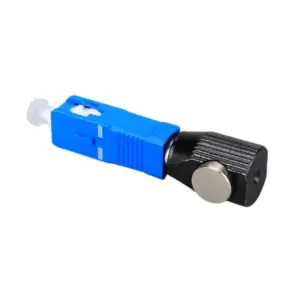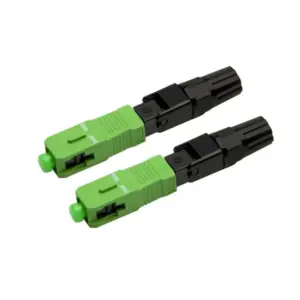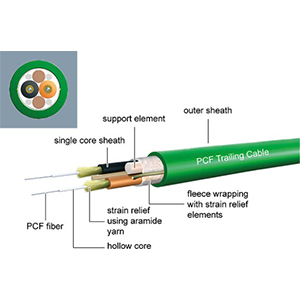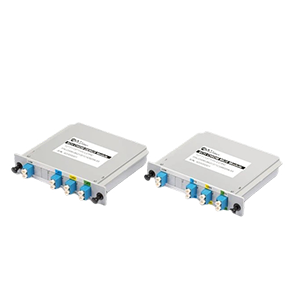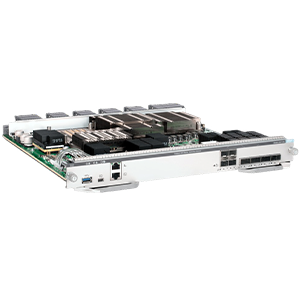I am pleased to introduce you to the types of fiber optic connectors that are the critical interfaces used to connect fiber optic equipment and components. They follow a series of standard specifications, such as TIA-568 and IEC 61754, ensuring interoperability and performance.
Common fiber optic connector types include SC, LC, and ST connectors, each with their own unique features and advantages. In addition, there are other types of connectors, such as FC, MPO/MTP and E2000 connectors, which are suitable for different application scenarios and needs.
Introduction to fiber optic connector types
-
Definition and function:
Fiber optic connectors are interfaces used to connect devices and components between optical fibers. They provide reliable optical signal transmission and connection functions. The main role of fiber optic connectors is to ensure precise alignment between optical fibers and provide low loss and high transmission quality connections. Standard specifications:
Fiber optic connector types typically conform to specific standard specifications that ensure interoperability between different vendors and devices. The following are standard specifications for several common fiber optic connector types:-
TIA-568 (Telecommunications Industry Association-568): TIA-568 is a standard specification developed by the Telecommunications Industry Association for communication cabling systems inside buildings. This standard specifies the interface requirements and performance parameters of different types of fiber optic connectors and fiber optic transmission media.
-
IEC 61754: IEC 61754 is a standard specification formulated by the International Electrotechnical Commission for the international standardization of fiber optic connectors. The standard specifies the physical dimensions, interface shapes and performance requirements for various fiber optic connector types to ensure interoperability and compatibility worldwide.
-
Other Standard Specifications: In addition to TIA-568 and IEC 61754, there are other standard specifications that apply to specific fiber optic connector types. For example, the SC (Subscriber Connector) connector complies with the IEC 61755-3-31 standard, the LC (Lucent Connector) connector complies with the TIA-604-10 standard, etc.
-
These standard specifications ensure the consistency and interoperability of fiber optic connector types, making fiber optic connections between different devices and manufacturers more reliable and convenient.
Common fiber optic connector types and their characteristics
SC connector:
SC (Subscriber Connector) connector is a common optical fiber connector. Its characteristics include:- SC/UPC (Ultra Physical Contact): SC/UPC connector is the most common SC connector type and is suitable for multi-mode and single-mode optical fiber. It has low insertion loss and reflection loss and provides reliable connection performance.
- SC/APC (Angled Physical Contact): The SC/APC connector adopts an inclined contact surface design, which can reduce reflection loss and provide higher optical signal quality. It is commonly used in single-mode fiber applications that require high reflection losses, such as fiber optic communications and fiber optic sensors.
LC connector:
LC (Lucent Connector) connector is a miniaturized optical fiber connector. Its features include:- Miniaturization: LC connectors are smaller and take up less space than other connectors. This makes it ideal for high-density fiber optic connections, especially in data centers and high-speed transmission environments.
- High density: LC connectors can achieve high-density fiber optic connections by providing more connection ports in a limited space.
- Low plug-in loss: LC connector has low plug-in loss, that is, there is very little optical signal loss when connecting and disconnecting. This makes LC connectors suitable for applications that require higher transmission quality, such as high-speed networks and optical fiber transmission equipment.
ST connector:
ST (Straight Tip) connector is a common fiber optic connector. Its features include:- Round shell: ST connector has a round shell, which is stronger and more durable. It is suitable for industrial environments and applications requiring a certain degree of mechanical strength.
- Insertion/Extraction Mechanism: ST connectors use a rotation locking mechanism to secure the connection by rotating the housing. This mechanism ensures a solid connection and relatively simple connection and disconnection operations.
- Application scope: ST connectors are commonly used in local area network (LAN), wide area network (WAN) and video surveillance applications, especially in the connection between fiber-to-fiber converters, fiber-optic switches and fiber-optic modems.
These common fiber optic connector types have their own characteristics and advantages in different applications, and the appropriate connector type can be selected according to specific needs.
Other common fiber optic connector types
FC connector:
FC (Fiber Connector) connector is a common optical fiber connector. Its characteristics include:- Threaded connection: FC connector adopts a threaded connection mechanism, which provides a stable connection and can resist vibration and external interference. This makes it particularly suitable for industrial environments and long-distance transmission.
- Metal Housing: FC connectors usually have a metal housing that provides extra protection and durability. This allows it to work in harsh environments with high reliability.
MPO/MTP connector:
MPO (Multi-fiber Push-On)/MTP (Multi-fiber Termination Push-On) connector is a multi-core optical fiber connector. Its features include:- Multi-core optical fiber connection: MPO/MTP connectors have the ability to connect multiple optical fibers in a single connector, thereby achieving high-density optical fiber connection and transmission. They are commonly used in fiber optic cabling and high-speed transmission environments in data centers.
- High-density packaging: MPO/MTP connectors feature a compact packaging design that allows multiple fiber optic connections to be provided in a limited space. This makes them ideal for implementing high-density fiber optic connections.
E2000 connector:
The E2000 connector is a high-precision fiber optic connector whose features include:- Protective sleeve: The E2000 connector features a rotatable or pushable protective sleeve that protects the fiber at the end of the connector from contamination, damage, and misalignment. This provides a high degree of reliability and stability.
- Automatic alignment mechanism: The E2000 connector adopts an automatic alignment mechanism, making the connection and disconnection operations easier and faster. It also provides high-precision fiber optic connections for applications that require higher connection quality, such as high-precision measurement and sensor applications.
These fiber optic connector types have specific characteristics and advantages in different application scenarios, and the appropriate connector type can be selected according to needs.
Application scenarios of fiber optic connector types
data communication:
Different types of optical fiber connectors have a wide range of applications in the field of data communications, including the following scenarios:
-
Local Area Network (LAN): In LAN, common connector types such as SC, LC and ST are widely used. They are suitable for connecting computers, network switches, routers and other network devices to achieve high-speed data transmission and communication.
-
Wide Area Network (WAN): Fiber optic connectors also play an important role in WAN applications. Connectors such as SC, LC and ST are commonly used to connect fiber optic modems (optical modems) and fiber optic switches to achieve long-distance data transmission.
-
Fiber to the home (FTTH): As a form of broadband access technology, fiber to the home requires connecting fiber optic cables to user terminal equipment. In this application, common connector types such as SC, LC and E2000 are used to connect fiber to the user’s terminal equipment, such as optical modem or fiber optic converter.
wireless network:
Fiber optic connectors also play an important role in wireless networks and are mainly used in the following scenarios:
-
Base station connection: Wireless communication base stations usually need to be remotely connected to a control center or backbone network. At this time, fiber optic connectors are used to connect base station equipment and fiber optic transmission equipment, such as fiber optic switches. In this case, common connector types such as SC, LC and MPO/MTP are widely used.
-
Wireless device connection: In wireless networks, high-speed data transmission and connections are also required between various wireless devices (such as wireless routers, wireless access points, etc.). Fiber optic connectors such as SC, LC and ST are suitable for connecting these wireless devices to ensure stable and reliable data transmission.
Fiber optic connectors are widely used in data communications and wireless networks. Different connector types can be selected according to specific needs to achieve high-speed, reliable and high-density fiber optic connections.
Installation and maintenance considerations for fiber optic connectors
Fiber optic connection:
-
Proper Alignment: When installing fiber optic connectors, ensure that the fiber ends are accurately aligned with the connector. Poor alignment can lead to loss of connectivity and signal attenuation. Use a microscope or other alignment tool to assist in the alignment operation.
-
Insertion and extraction operations: Apply gentle and even force when inserting and extracting fiber optic connectors. Avoid excessive or sudden force that could damage the connector or fiber. Pay attention to the orientation and alignment of the connectors.
Clean and protect:
-
Cleaning tools: Clean fiber optic connectors regularly to ensure good signal transmission. Use specially designed fiber cleaning tools, such as fiber cleaning wands or fiber cleaning cartridges. Avoid using rough materials or potentially damaging tools to clean connectors.
-
Protective Cover: Always keep the protective cover on the fiber optic connector when not in use. Protective covers prevent dust, contaminants, and other impurities from entering the connector, as well as preventing accidental damage.
-
Avoid contamination and damage: Avoid touching the connector ends to avoid fingerprints, grease, or other contaminants. When not in use, keep connectors in a dry, clean environment and avoid prolonged exposure to dust, moisture, or humidity.
Proper installation and maintenance of fiber optic connectors is key to ensuring the reliability and performance of fiber optic connections. Following proper operating procedures and precautions can minimize connection loss and failure and extend the life of the connector.
Summarize:
In the field of data communications, different fiber optic connector types are widely used in local area networks, wide area networks, and fiber to the home. At the same time, in wireless networks, fiber optic connectors also play an important role, used for high-speed fiber optic connections between base stations and wireless devices.
When installing and maintaining fiber optic connectors, we need to pay attention to correct alignment, insertion and extraction operations to ensure the reliability and performance of the connection. In addition, it is also very important to clean and protect connectors regularly, using professional cleaning tools and protective covers to avoid contamination and damage. We believe that by selecting the appropriate fiber optic connector type, and installing and maintaining it correctly, you will be able to obtain high-quality fiber optic connections to meet various communication needs.
- What are the four 4 types of fiber optic connectors?
- What are the 3 most common fiber connectors?
- What is LC and SC fiber connector?
- What are the 3 types of fiber optic cable?
- What are the 4 types of connectors?
- What are the most common types of fiber connectors?
- What are the 3 types of connectors?
- What is the difference between LC and SC?
- What fiber connector for sfp?


